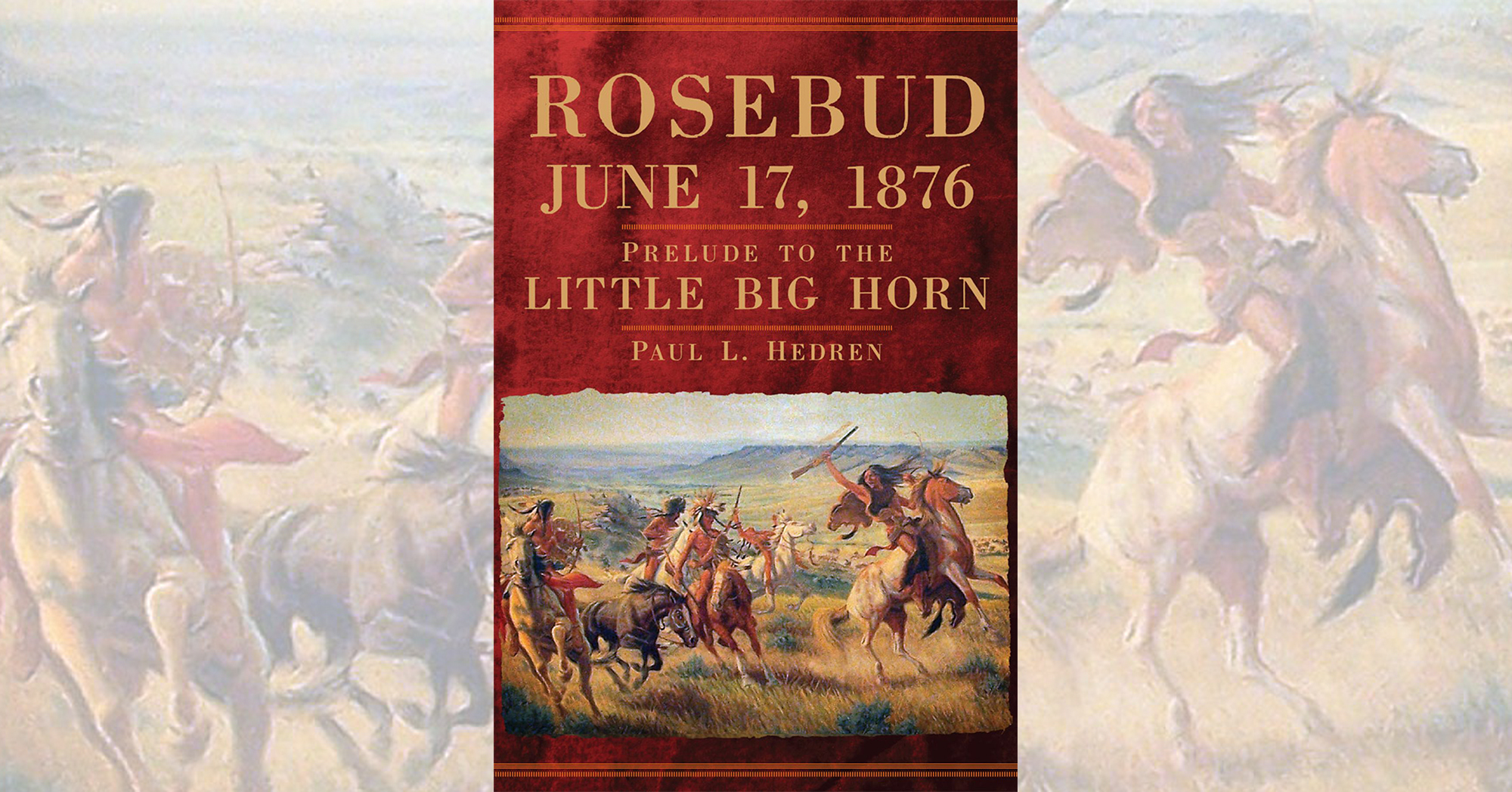Rosebud June 17, 1876: Prelude to the Little Big Horn, by Paul L. Hedren, University of Oklahoma Press, Norman, 2019, $34.95
The Battle of the Rosebud has long been overshadowed by that other June battle also fought in southeastern Montana Territory—just 25 miles away, in fact—only eight days later. Of course, the Battle of the Little Bighorn has overshadowed all other clashes of the Indian wars, and that’s understandable. The deaths of Lt. Col. George Armstrong Custer and his immediate command, coupled with the decisive victory by northern Plains Indians, stunned the entire nation. But the fighting on Rosebud Creek may have been the largest Indian battle, in terms of collective troop numbers, ever fought in the American West. Despite the word “prelude” in the book title, it was no mere preliminary to the deadly action soon to come. With this 468-page book Paul L. Hedren, a lifelong student of the Indian wars and a former National Park Service historian and superintendent, gives the Rosebud its due, relating details of the fighting and revealing key figures on both sides and the place this consequential engagement has—or should have—in the Great Sioux War of 1876.
The U.S. Army commander at the Rosebud was Brig. Gen. George Crook. His March 1876 Big Horn Expedition into Montana Territory had only served to stir up the Sioux and Northern Cheyennes. (Crook himself was not present at the climactic Battle of the Powder River, leaving Colonel Joseph J. Reynolds to take most of the heat for its failures.) By the summer Crook had organized a second expedition, his column being one of three (the others led by Colonel John Gibbon and General Alfred Terry) in a larger campaign to strike at the free-roaming Indians. This time, Crook fielded a fighting force of some 1,400 men, including Crow, Shoshone and Pawnee auxiliaries the general considered essential.
“The [Rosebud] fight at one point,” Hedren writes, “amounted to three concurrent disparate clashes playing across a field miles long and miles wide.” The bloodiest fighting came at Kollmar Crossing, where nine men of Lt. Col. William B. Royall’s command died—the only deaths on the soldier side on June 17. That day only about 13 Indians died, even though soldiers expended an estimated 15,000 rounds of ammunition. “The soldiers never stopped to take aim at you,” one Indian participant recalled. “They just shoot here and there and the same time running.”
The battle featured gritty combat, courage and heroism on both sides. It has been called a tactical victory for Crook, who repulsed his attackers and held the field at the end of the day, but it could just as easily be regarded as a standoff or even a defeat. Crook soon withdrew to tend to the wounded, reinforce and resupply, but he failed to renew his campaign, in part because the allied Indians decided they’d had enough fighting for the time being. Crook has taken far more blame for his inaction than for how he managed the actual fight. The argument goes that if Crook had kept on the offensive, his effort might have averted the great disaster on the Little Bighorn. “He never rendezvoused with Custer,” Hedren writes. “They never jointly swooped down on Sitting Bull’s village. General Crook might have changed history. Instead he went fishing.” In a report to General Phil Sheridan that fall Crook rationalized his inaction in the wake of the Rosebud by noting what happened to Custer at the Little Bighorn and concluding, “Subsequent events proved beyond dispute what would have been the fate of [my] command had the pursuit been continued beyond what judgment dictated.” Many historians, including Hedren, don’t agree with Crook’s assessment. Not in dispute is that Hedren has written a fine, comprehensive account of this significant Indian wars battle.
—Editor





